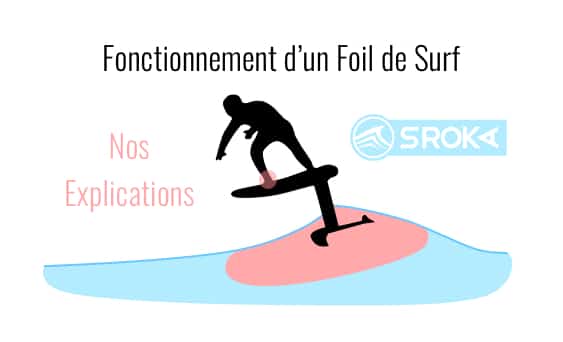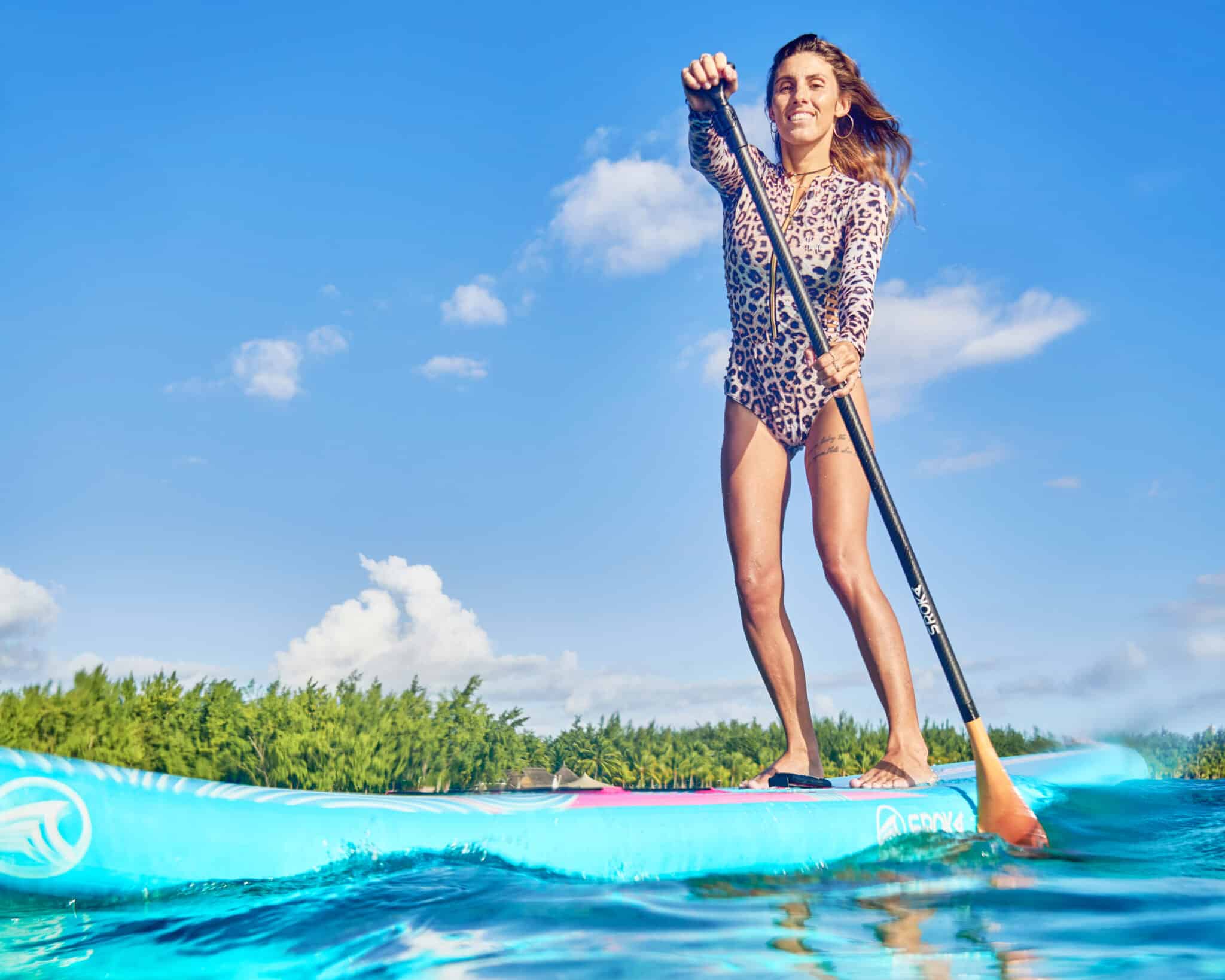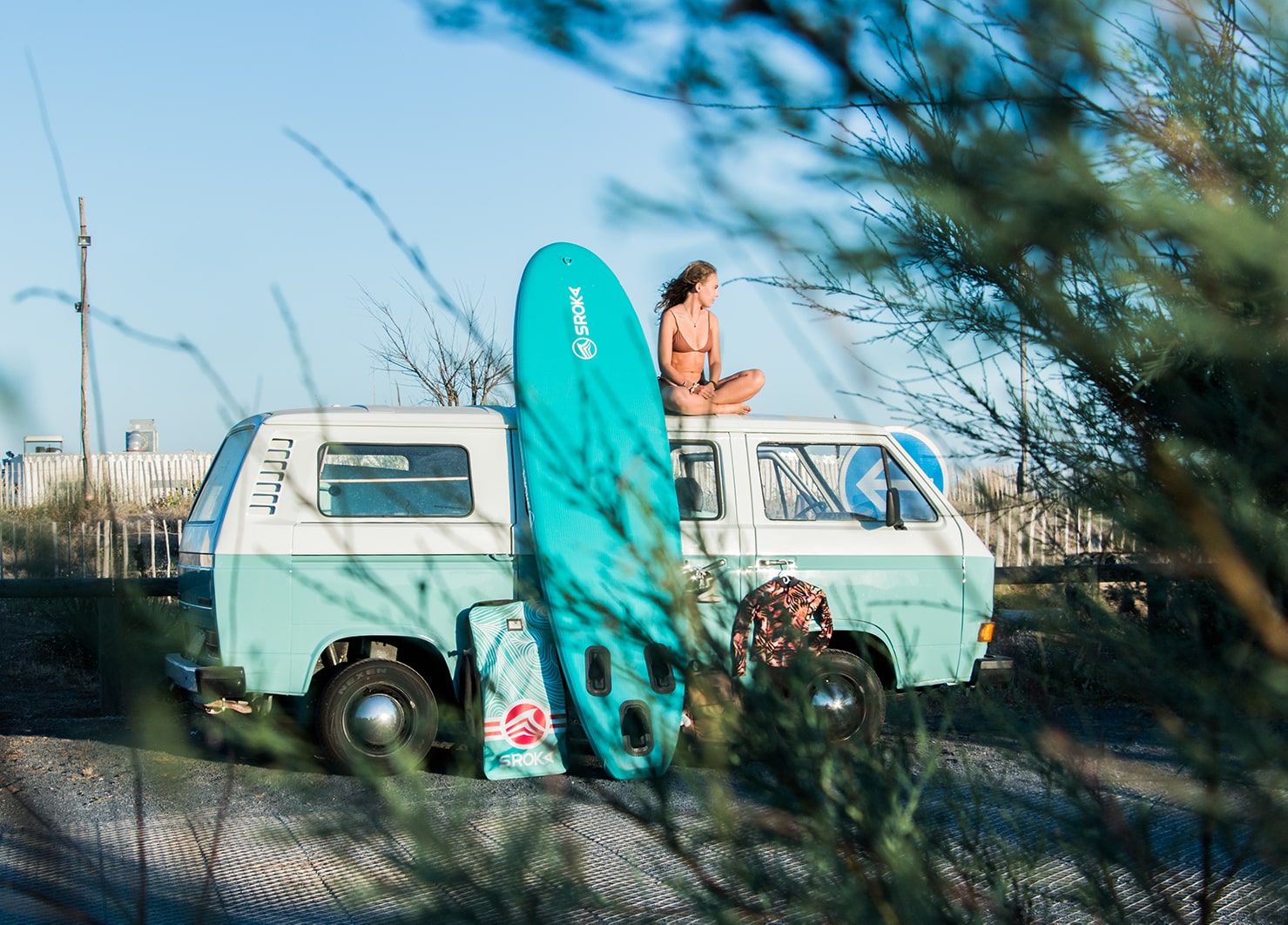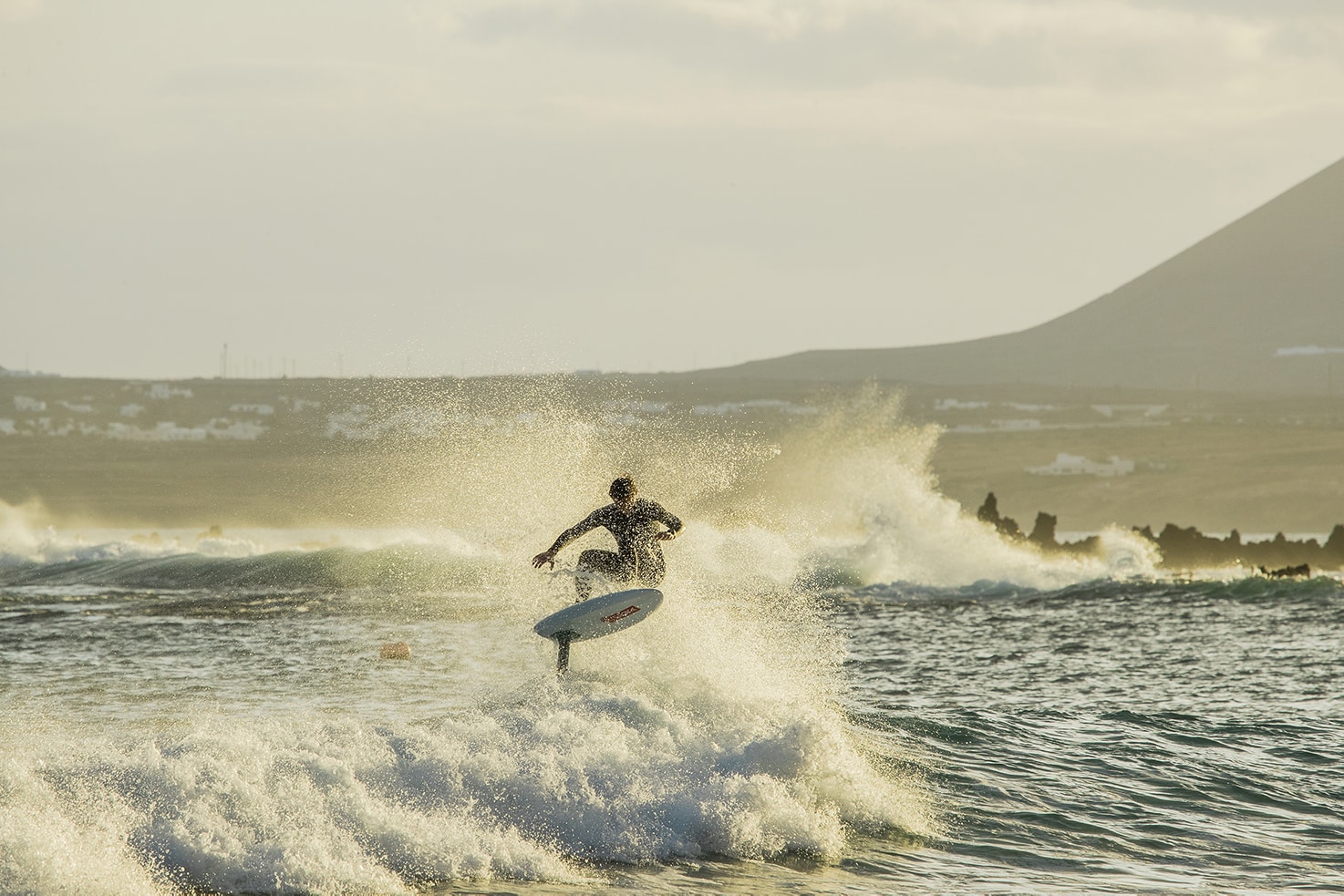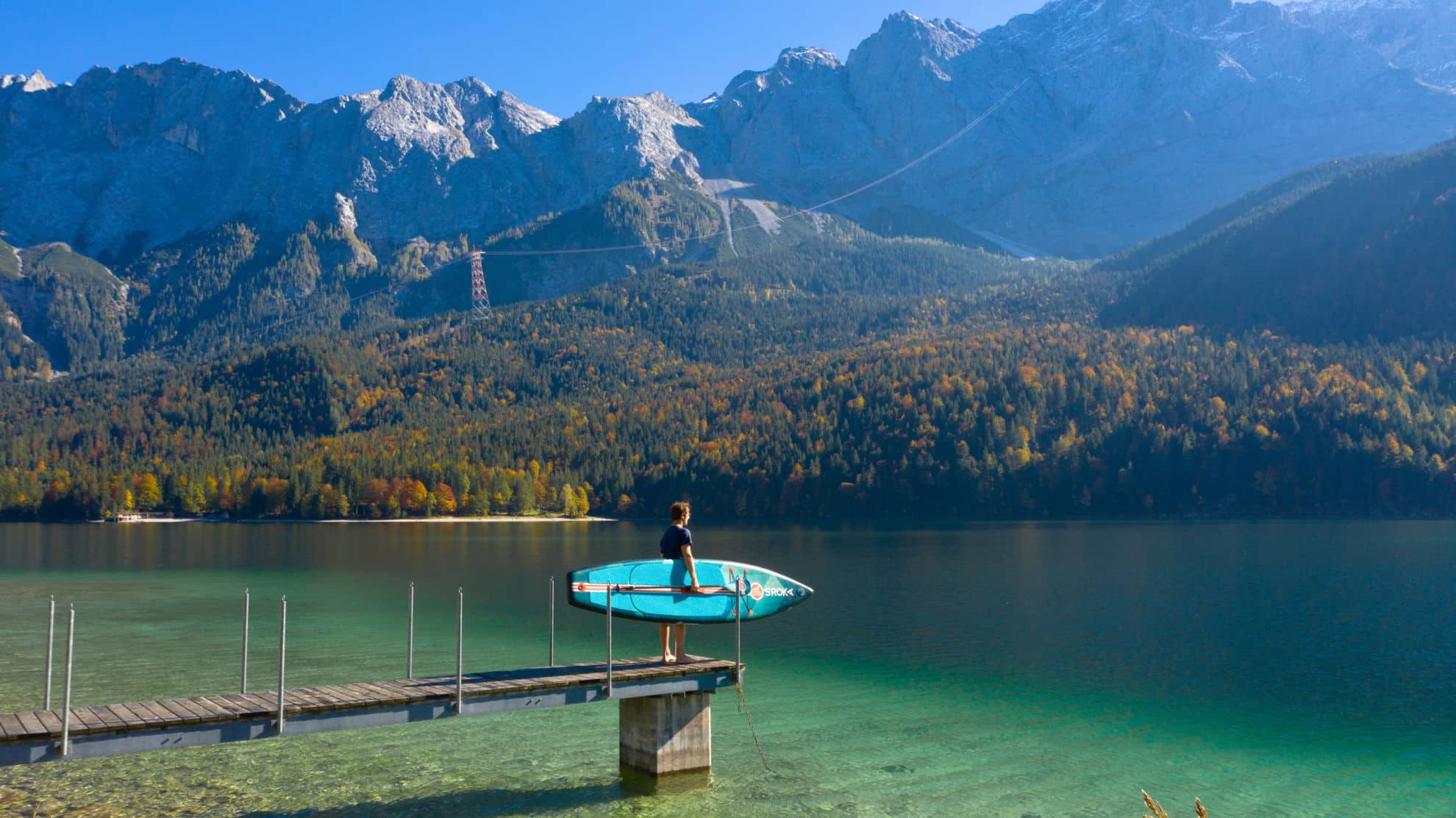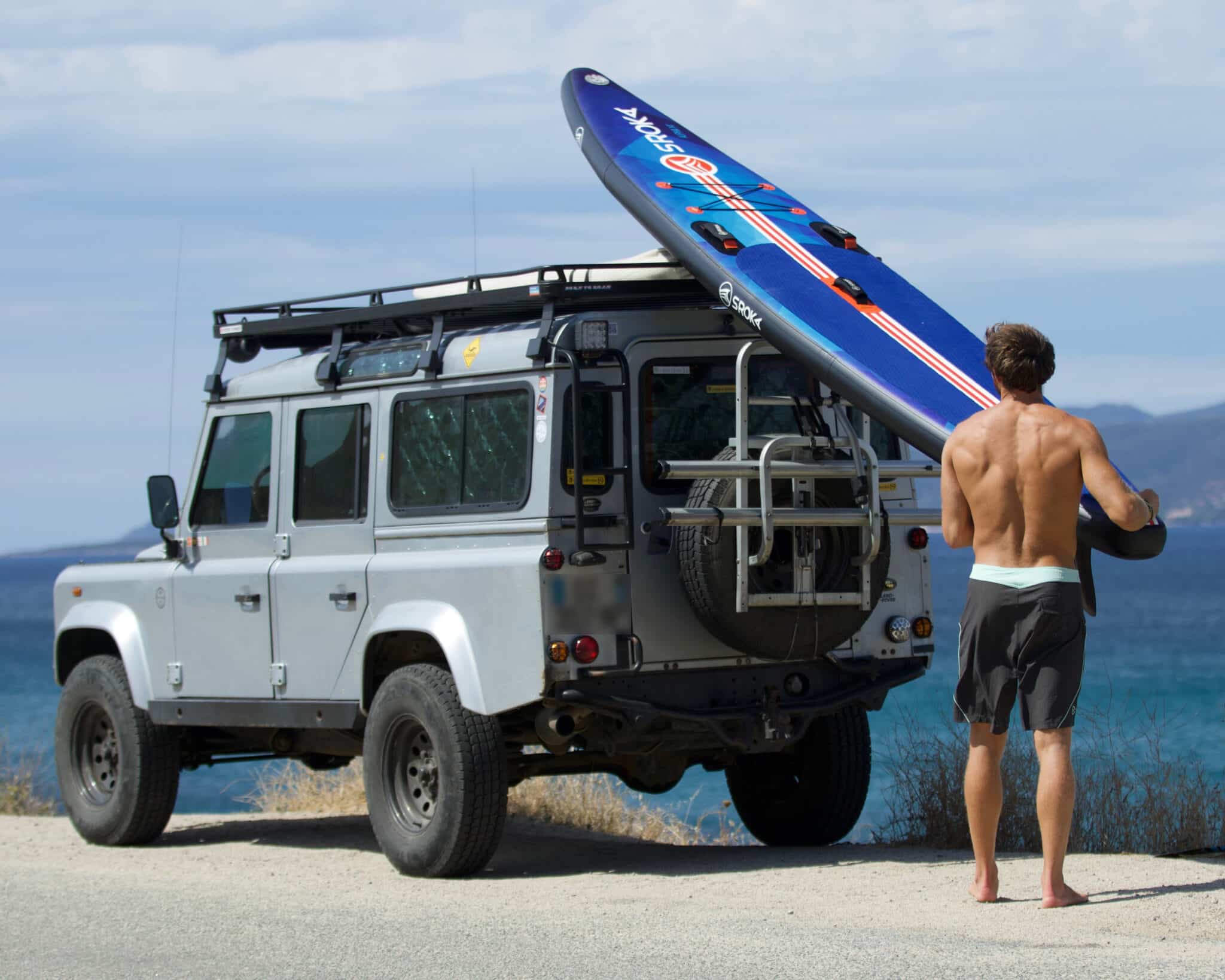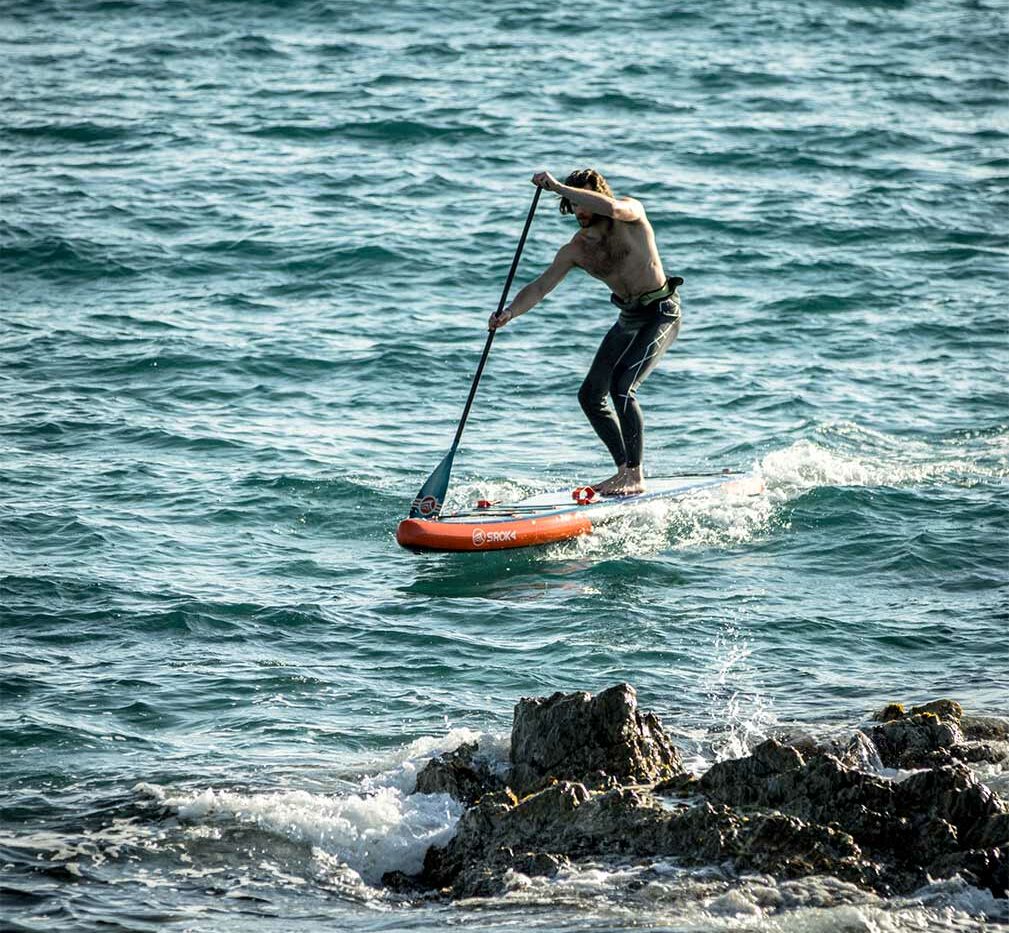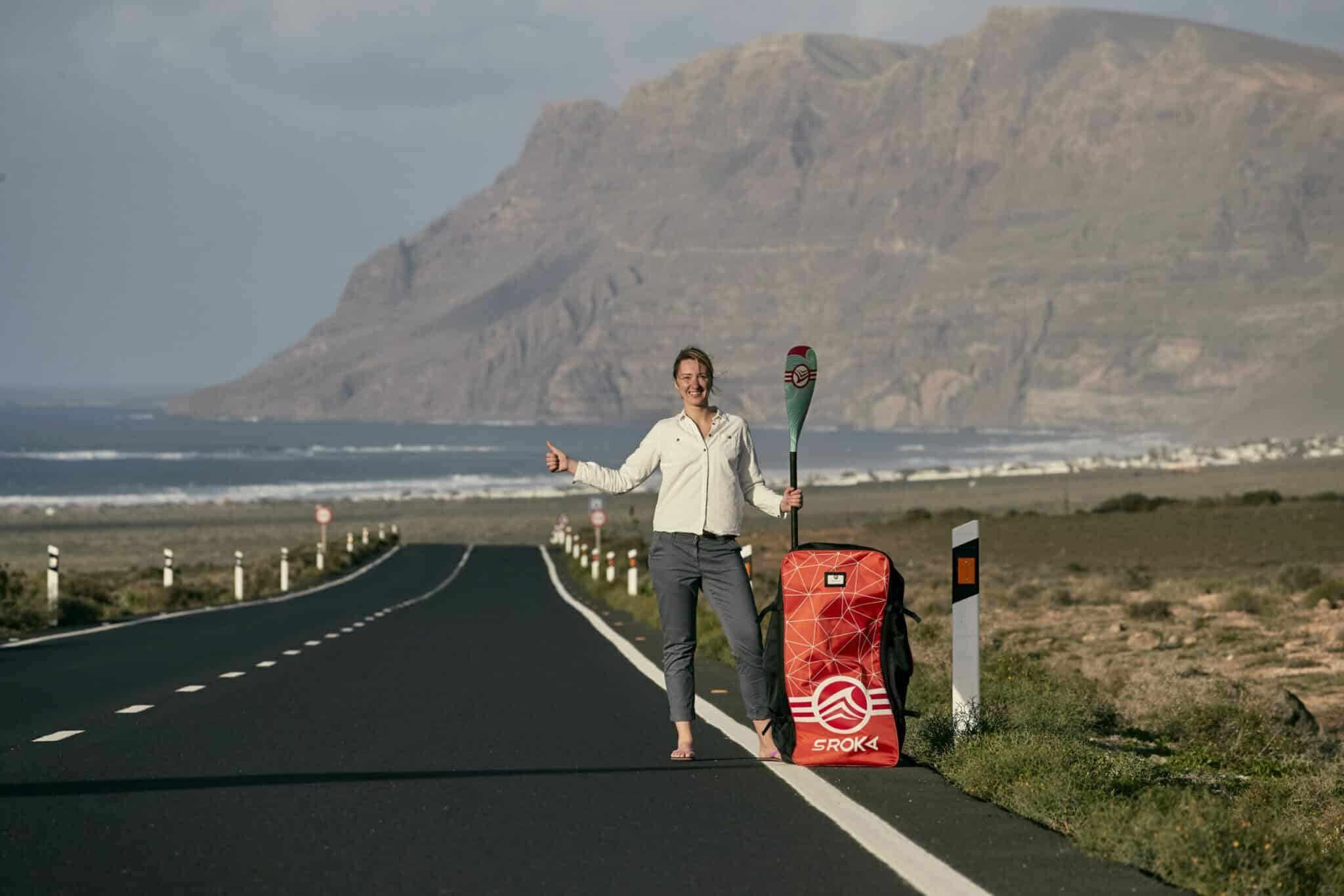 LE MAGAZINE
LE MAGAZINEWhat’s the best paddle?

Paddleboarding needs no introduction: it’s a water sport that lets you move around on the water with a board and a paddle. It can be used for a variety of disciplines, and is ideal for a wide range of enthusiasts, thanks to its ease of use and ability to get away from the crowds quickly, while remaining close to nature.
The notion of “best paddle” is a subjective one. It depends on your expectations, your needs and what you’re looking for in a paddle.
The best inflatable paddle for you won’t be the best paddle for your neighbor. Some will be looking for the best price, others for the best stability and/or versatility or maximum performance. Each criterion will lead to different choices. There’s no such thing as the best all-round paddle. It’s all about compromise. In this article, we’ll help you choose and find the best paddle for you.
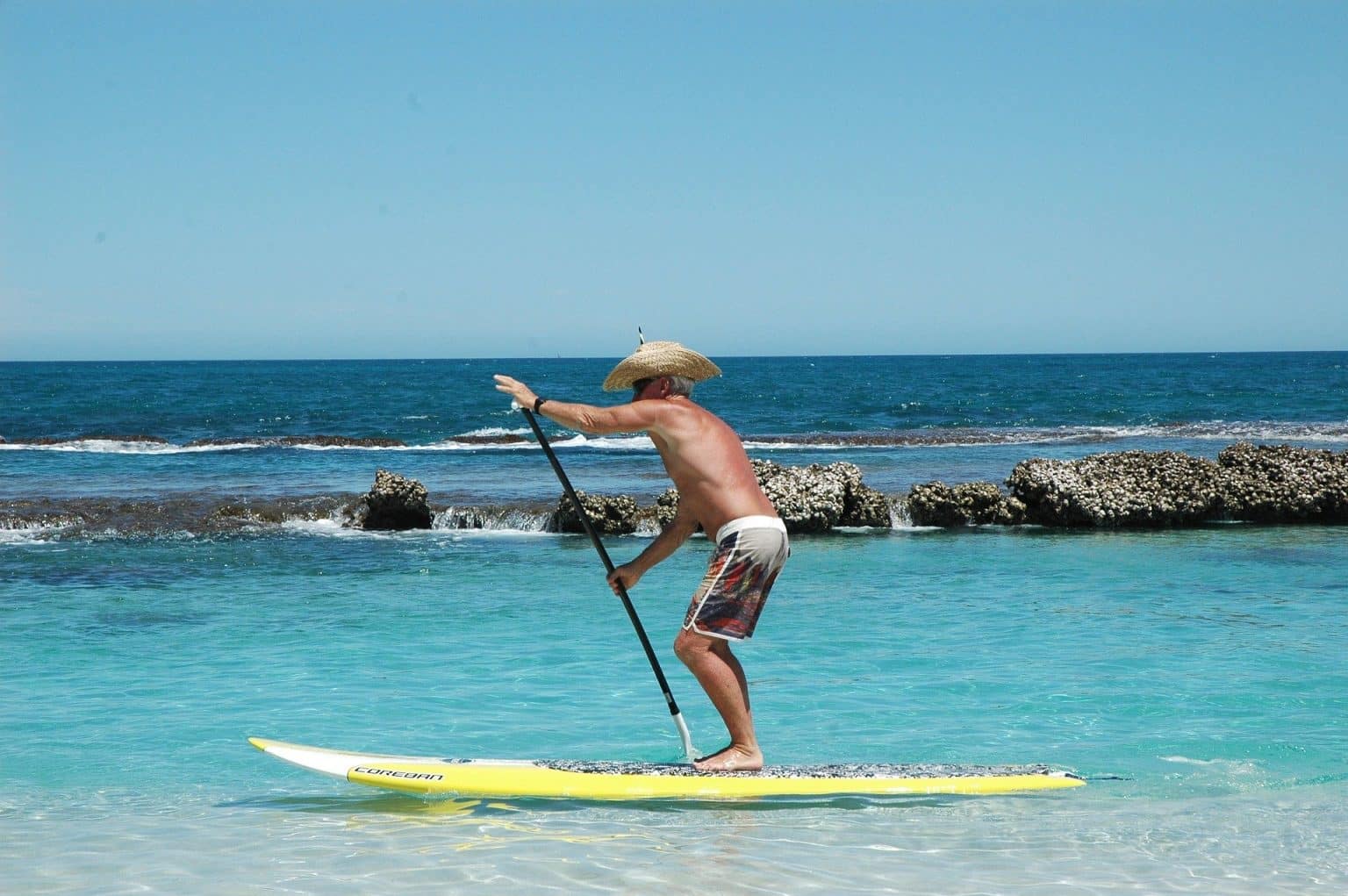
What are the criteria for choosing a paddle?
Rigid paddle VS inflatable paddle
The first criterion to consider is space. If you’ve got a lot of space and live by the water, the problem of space isn’t the same as if you lived in an apartment. A rigid paddle will glide more smoothly and give you a sharper feel.
However, the paddle will be bulkier, more fragile and therefore not suitable for everyone.
The inflatable paddle is a really interesting alternative if you’re not looking for extreme performance, because it lets you do the same thing with a hard paddle without the drawbacks of a rigid paddle. You’ll lose a little in glide, you’ll lose a little in board rigidity compared with a hard SUP board. However, it will be more family-friendly, easier to go on vacation with, more solid and for leisure use, it will do the job perfectly.
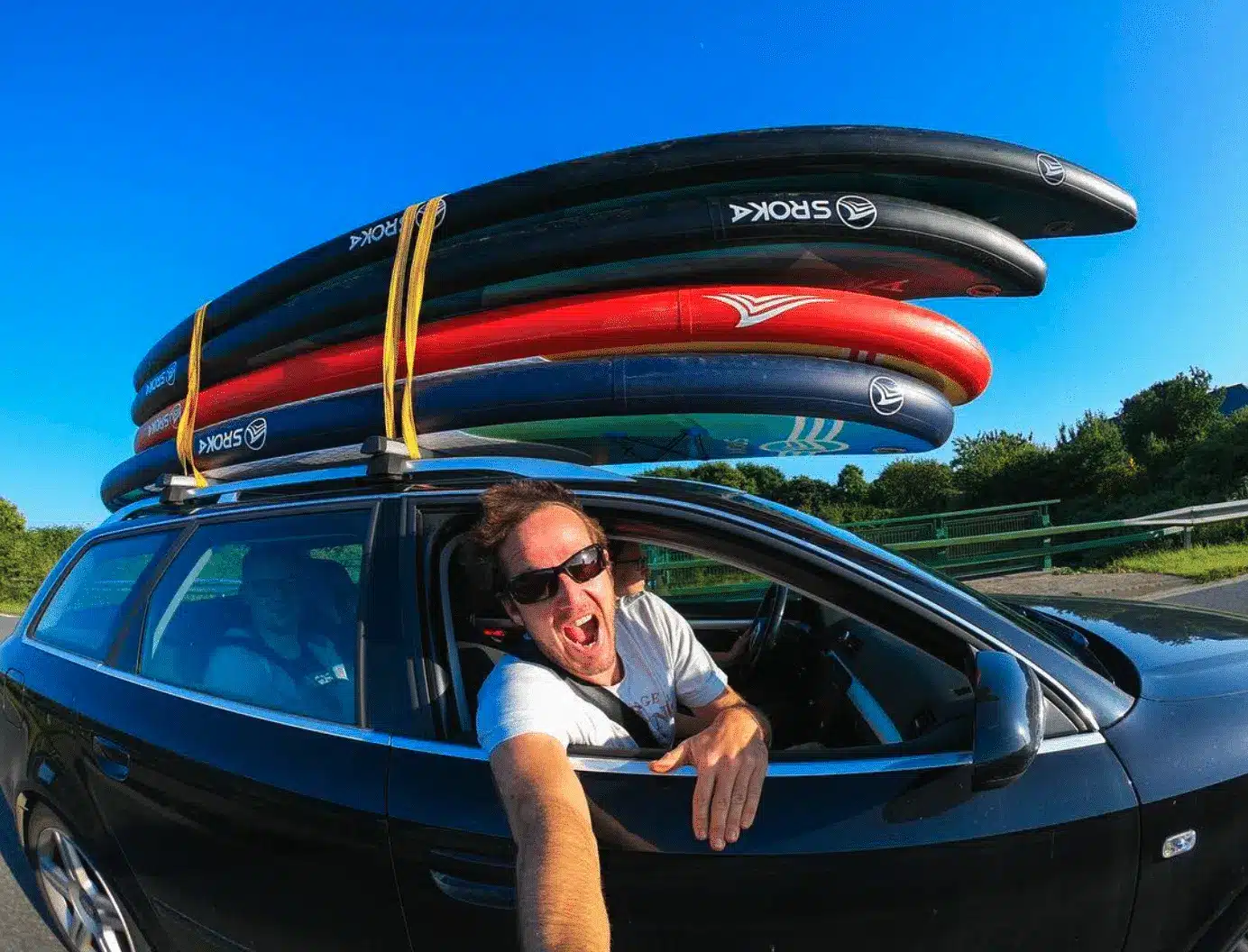
The choice of paddle varies according to the discipline (initiation, touring, racing, surfing).
Depending on whether you want to go for a ride, a sporty ride, a beginner ride, take a child with you or go racing or surfing, the board size changes, the board width changes, the board stiffness changes (and therefore the construction) and quite simply the board length differs.
If you’re just starting out, a shorter board around 10 feet will do just fine. Similarly, if you want to surf, a board shorter than 10 feet is recommended, as it will turn more easily.
If you’re not very comfortable in terms of stability, opt for a board with plenty of width to increase your lateral stability.
If you’re looking for a paddle to glide and travel long distances, opt for a board longer than 11’6 – 14 feet.

Practice level (beginner, advanced, expert)
The paddler’s skill level has a major influence on the choice of board: a beginner, an experienced paddler or an expert will not use the same paddle sizes.
Nevertheless, the trend remains the same.
Those who want to race or go for a long ride will prefer large paddles, while those who want to get into the waves will prefer small boards.
But what really makes the difference is the board width.
A beginner will be able to use a 12’6 paddle to get started, but will need a slightly wider paddle for greater stability (31 or 32 wide). Conversely, if the expert wants to use a 12’6, he’ll prefer a 12’6×28 wide paddle.)
Width determines paddle stability: the wider the paddle, the more stable it will be, but the less it will slide.
So board length is not a criterion to be taken into account according to level. It’s the width that’s important.
Paddler weight and height
Of course, the paddler’s size is fundamental to the choice of board. Proportionally speaking, a 2m adult will have the same equivalence with a 14-foot paddle as a 1m60 adult with a foot paddle. We’re talking about the ratio between the size of the rider and the size of the board. So the taller you are, the more suitable it will be for you to take a big paddle. Unless you’re short and want to maximize glide, then a paddle over 12′ will be beneficial.
Similarly, weight will influence the choice of board. A heavy person will be more stable on a bigger, wider board.
To sum up, the size of each rider should be taken into account to optimize your choice of board.
Smaller riders can choose from all sizes, while heavier riders will need a bigger, wider board to increase stability and glide.
5. The price
The price of a paddle is determined by many criteria. The list is not exhaustive, but will give you more precise information on the quality of a paddle or not.
- The first criterion is the length of the paddle. A paddle is made by hand. As a result, the longer the SUP, the longer the manufacturing time. This is why larger paddles cost much more than a 10-foot SUP, for example.
- The second criterion is the quality of the pvc used. Some factories specialize in inflatable beach buoys, but also manufacture paddles. Others, like ours, manufacture top-of-the-range semi-rigid boats. In our factory, we use the same quality of PVC as for semi-rigid boats. This means we’re more impact-resistant, stiffer and more durable over time. Some of our rental customers have been using our products for over 8 years without changing them.
- The number of layers of pvc used in the board. Granted, it doesn’t look like it from the outside. But the quantity of PVC layers determines the paddle’s quality, rigidity and durability. To get an inexpensive paddle for under 200 euros, you need to reduce the time spent on each board, reduce the quality of the PVC, and reduce the quantity of PVC and the quality of the glue (we’ll get to this point just below). All these restrictions mean that a paddle can cost 3 times less to produce than a top-of-the-range product. In concrete terms, this translates into a paddle that rolls very easily (this is one of the criteria for the quantity and quality of the pvc used). The easier a paddle is to roll (when stored), the less material there is inside. The SUP will then be less rigid, more fragile and less stable: every time a chop touches the board, you’ll feel the chop’s movement on the board.
So the harder a paddle is to bend, the heavier it will be (for the same size and dimension), and the stiffer, stronger and more durable it will be over time. The amount of material put into a board determines its rigidity, durability and price;
- Glue quality. In the same way as the quantity and quality of the pvc used, the durability of a paddle is also influenced. The more expensive the paddle, the better the quality of the glue, and the longer it lasts under high temperatures. As we manufacture our paddles in semi-rigid factories, we use the same glues, so we’re renowned for our solid, long-lasting products.
6. Important features to consider
As we have seen, there are many criteria to take into account
- on the one hand, your technical level: a paddleboard beginner won’t use the same board as an expert.
- your program, whether you want to go for a sporty ride, an initiation or surfing. The size, shape and width of the paddle are all different.
- Your body size will inevitably influence the size of the paddle you buy.
- If price is one of your main criteria. Then you’ll have to compromise on durability and stiffness. Once again, the stiffness, durability and stability of a paddle are determined by the amount of carbon inside the board. The more layers, the better the quality of the pvc and glue, the longer your paddle will last.
- We therefore advise you to rinse it once in a while with fresh water at low pressure.
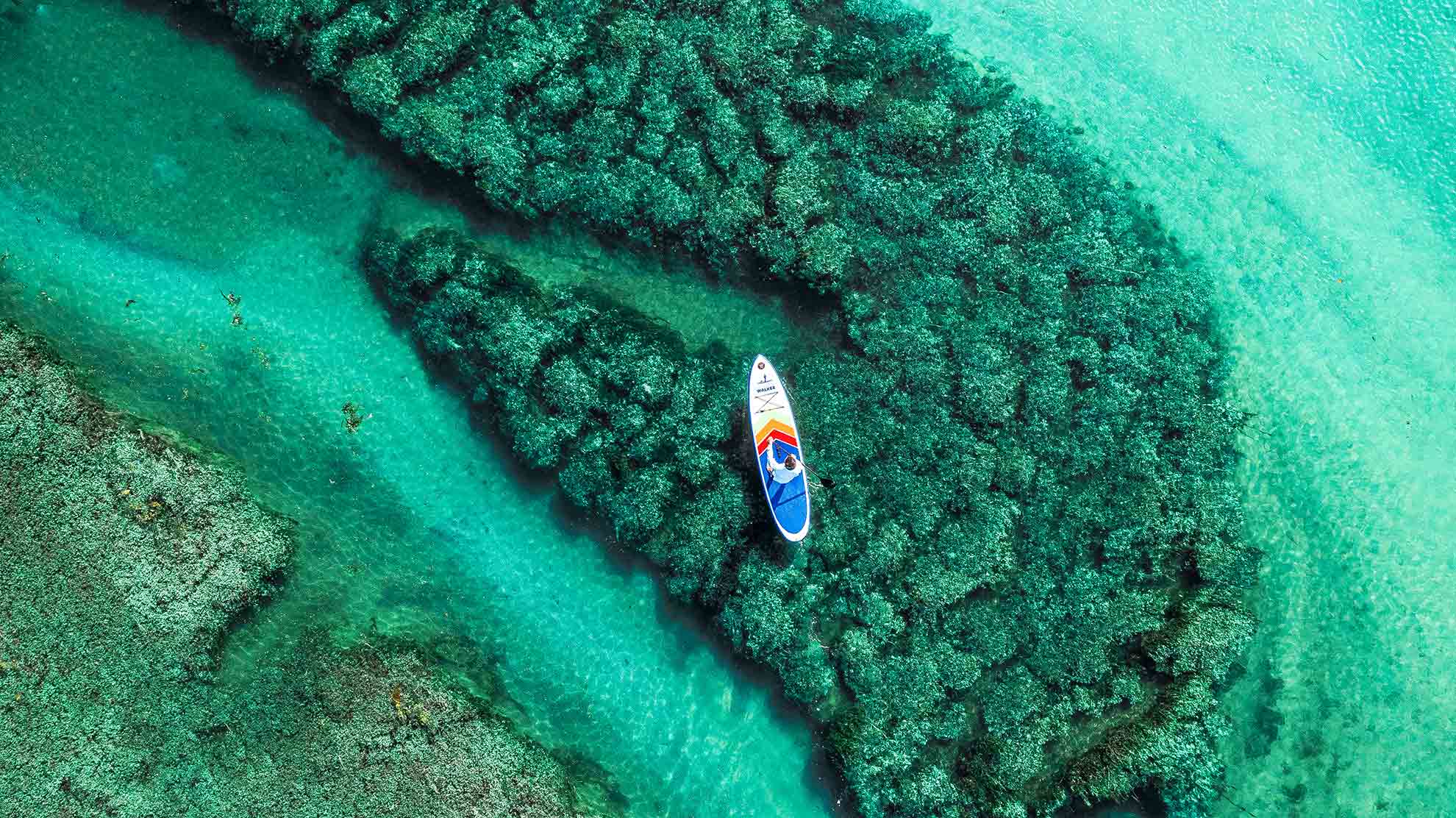
Presentation of the best paddles by category according to the above criteria
1) The beginner
If you have no experience in board sports, we recommend that you choose a medium-length board (around 10-10’6). This will give you great maneuverability and ease of use. It’s also easier to inflate, store and handle. This type of board is stable as long as you have enough board width. So we advise you not to go below 31 inches in width.
Of course, if you’re tall and heavy, you’ll need to enlarge and widen the board a little (for example, a 10’6 x32 board will do just fine).
In our range, we recommend three paddles for beginners.
- The 10’4 x 32 ocean walker paddle is an all-purpose access paddle pack that’s easy, light and space-saving.
- The Easy 10 x 31 paddle or the Easy 10’6 x 32. The Easy 10 is by far the more accessible of the two. Smaller and lighter, it’s perfectly suited to people weighing less than 85 kg. The second is more suitable for larger people.
- Continuing to move upmarket, the Malibu 10 and 10’6 paddles are now part of our professional range. Sturdier and more resistant over time, they have made our reputation with nautical centers and beach clubs.

2) Solo rides
If you’re looking for more or less sporty solo rides. We advise you to choose longer boards with a slimmer nose, for better gliding and less water pushing. In practical terms, this translates into less paddling to cover the same distance. You produce less effort and go faster without forcing yourself.
To be perfectly suited to solo rides, we recommend two ranges
- the Easy range in 11’6 or 12’6, paddles that are wide enough for maximum stability with excellent glide and excellent value for money.
- The Alpha paddle range , from 11’6x 32 to 14x 27, is a very high-end range, with reinforced, rigid pvc. This range is as close as you can get to the rigidity of a rigid board.
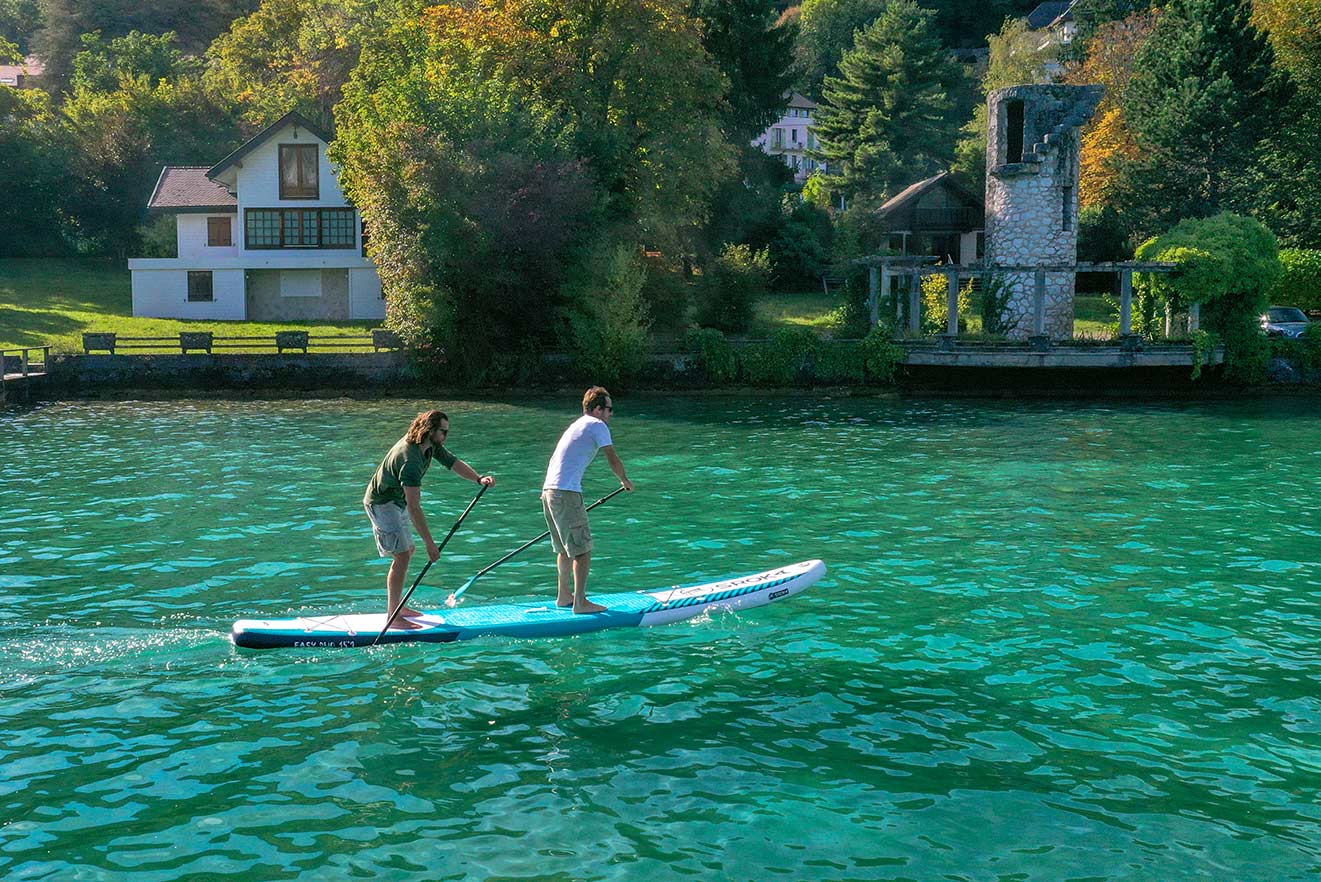
3) Duo / family outing
If you want to sail with several people on one board, you’ll need to increase the board length. There are duo paddle boards that can accommodate 2 adults and 2 children. These boards are much longer than most (around 16 feet), but they really allow you to ride the same board all together, with real cooperation between the different people on the board. It’s a bit like the spirit of team sports: to move forward, you have to make a joint effort to keep the boat moving.
This range is designed for riders who want two on one board.
The Easy Duo paddle offers the best value for money. Solid and ultra-stable, it can accommodate the whole family.
The duo in the professional range, on the other hand, is the strongest on the market, developed by clubs for clubs. It provides a little more rigidity and stability at higher speeds.
4) Racing
If you want to race or ride fast, then we advise you to opt fora board that’s over 12’6 with very little width to facilitate gliding. With this in mind, if you go for an Alpha 14’x29, for example, you’ll have a perfect compromise for gliding and stability. The longer the board, the less you’ll need to paddle a little to the right and a little to the left. You’ll glide more with fewer paddle strokes.
Without hesitation, we recommend the Alpha range in 12’6x 28 or 14×27 or 29 widths. This professional range will provide you with stiffness thanks to a reinforced construction on the rails, deck and hull. These paddles will provide maximum glide and, as the paddle is very rigid, it will be ultra-stable whatever the sea conditions.

5) Surfing
To surf, you need to reduce board length, and have a more closed outline at the front and back to facilitate maneuverability. These boards require a little more agility and balance, as they are a little less stable. However, you can find a compromise by taking a 10-foot board, for example, with an outline that’s a little less pinched at the ends, which will give you stability but a little less maneuverability.
We recommend 3 different models:
- The first is the wave 9’5. It’s designed for 70% surfing and 30% cruising, and is part of the professional range. It’s reinforced and therefore stiffer, and will provide you with perfect supersurfing sensations.
- Another possible choice is the Easy 10 or Malibu 10, two paddles that are 70% touring and 30% wave oriented. They’re a little less maneuverable but more stable.
- The malibu is part of the professional range, so it’s ultra-reinforced, and the Easy 10, which has the same shape, is great value for money.
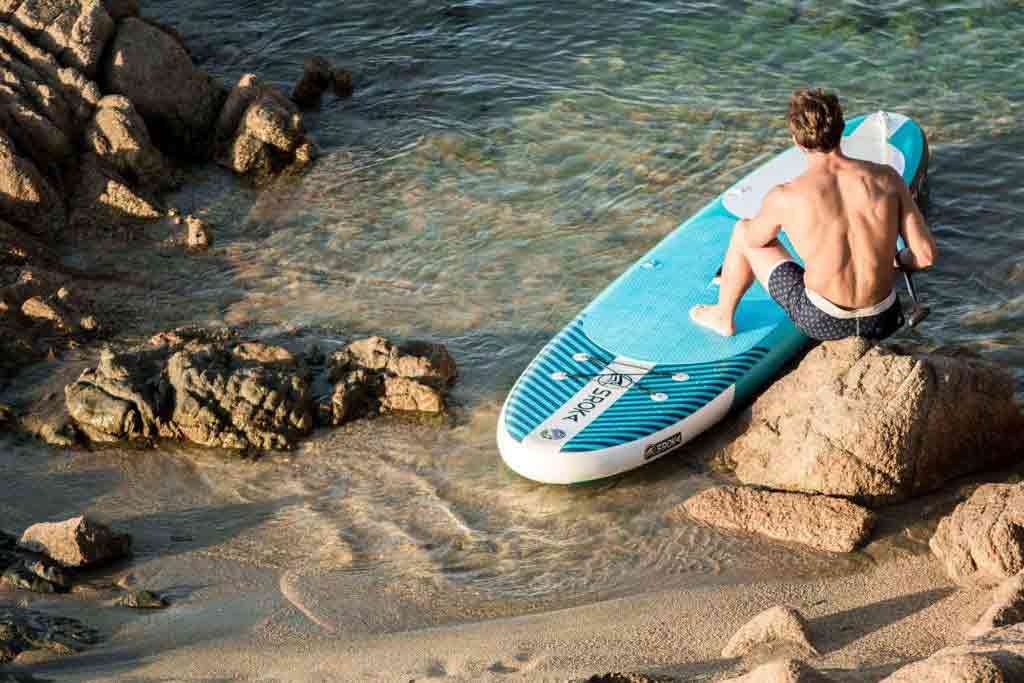
6) Are there multi-purpose paddles for a variety of uses?
Yes, of course there are multi-purpose paddles, but not for all disciplines at the same time. In fact, if you want to surf or race, if it’s stable and not too big, it’s going to be complicated to do everything. It’s the same for all sports. A product that’s advertised to do everything will never be relevant to every discipline.
So choices have to be made.
For example, if you want 30% waves and 70% family cruising, the paddle can be the same. If you want to do a bit of sporty touring but also own a paddle for the family, that’s perfectly possible. You’ll just have to accept that you won’t be totally proficient in all disciplines.
Our choice would be the Easy 10 or Malibu 10 range, which would be the right compromise for surfing and cruising. If you’re heavy, opt for the Easy 10’6 or Malibu 10’6.
If you want to start out and do a bit of walking (without having a vague use), we advise you to refer to the Easy 11’6 or 12’6 range or the alpha range in 11’6x 32 or the 12’6 x31.
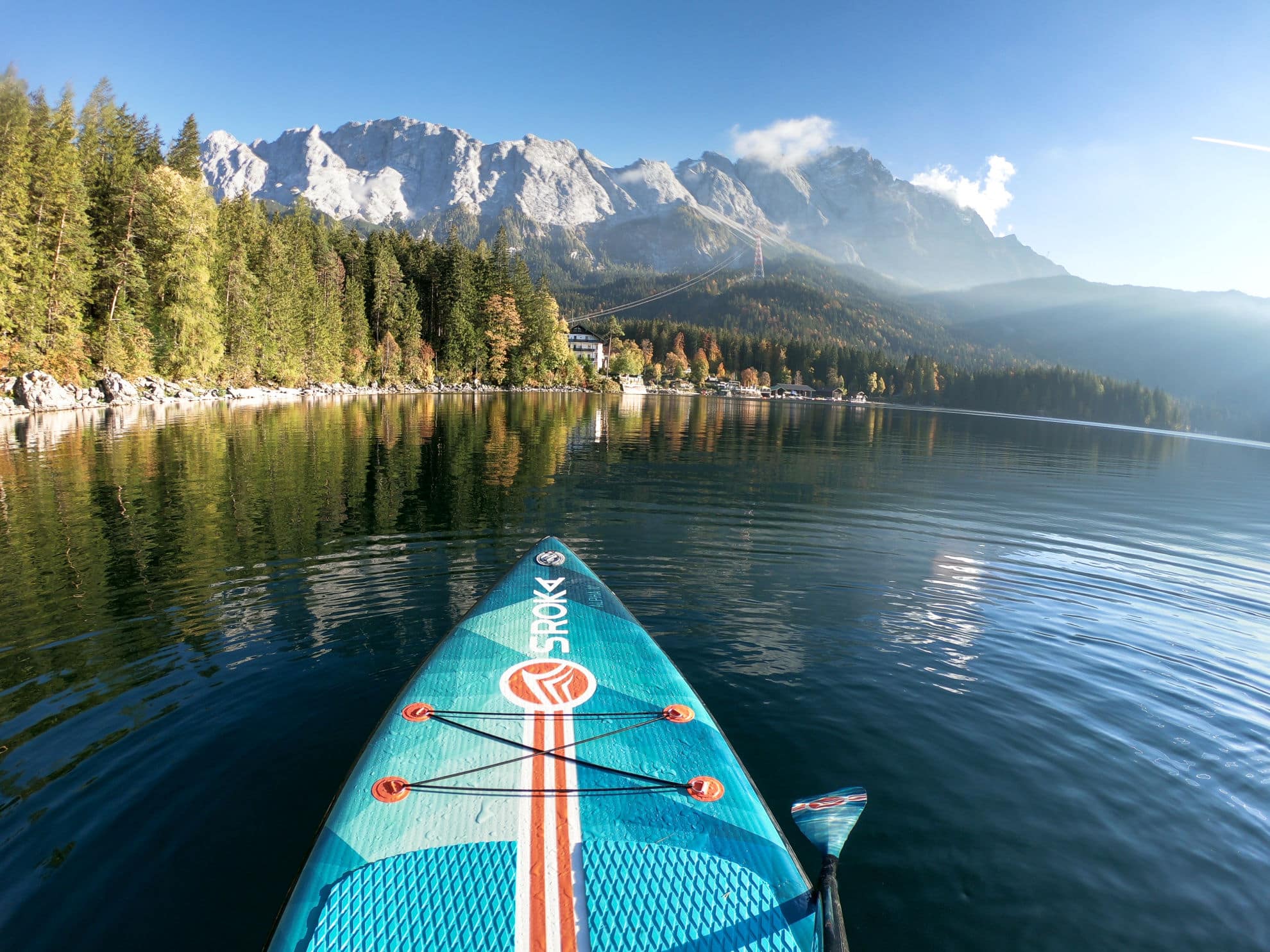
Comparison of the different types of paddles available on the market
1) Which brand to choose for a quality paddle?
[wptb id=”88515″]
2) What makes an inflatable paddle better than others?
- PVC quality : Different qualities of PVC exist, each with its own rigidity. Some brands use truck tarpaulins, while others, like us, prefer PVC specially designed for RIB boats. These reinforced PVCs offer superior durability.
- Glue quality: The glues used play a crucial role. We have chosen to work with the same suppliers as for semi-rigid boats. Some brands reduce glue quality to cut manufacturing costs, but this can compromise board longevity.
- Amount of PVC in the board : the greater the amount of PVC, the stiffer the paddle. In short, a very light paddle contains less material inside, while a reinforced paddle will be slightly heavier due to extra layers of PVC on the rails or increased thickness.
These three factors contribute to the quality and performance of a paddle. Finding the right balance between stiffness, durability and weight is essential to choosing the right board for you.
- Shape of paddle: The shape of the paddle is essential and varies according to your discipline. For example, boards longer than 11 feet are ideal for long-distance cruising. On the other hand, a shorter board is better suited to waves or family outings. It’s important to note that water generates 800 times more drag than air. That’s why we spend time testing our paddles with our naval architect to find the right balance between stiffness, glide and stability.
- Colors and design: A high-performance, rigid and stable paddle that is also aesthetically pleasing increases the perceived value of the product. What’s more, an attractive design can play a role when you come to resell your paddle.
- Quality equipment : The quality of the bag, pump and paddle has a direct impact on the overall quality of your product. Even if you have the best paddle on the market, a poor-quality pump or paddle can compromise its usability.
- Price : Price is an undeniable indicator of quality. A paddle sold for 150 euros probably cannot be considered a high-quality product.
All these criteria help differentiate quality and help you choose one paddle over another.
At SROKA, your objective is clear: to offer quality products that meet every demand. We offer three product ranges:
- Ocean Walker : In this range, you keep the right glues and PVCs from your factories, but reduce the quantity. This enables you to offer an attractive price while guaranteeing the product’s durability.
- The Easy range offers the best value for money.
- Paddles Haut de Gamme: You offer two top-of-the-range ranges, theAlpha and the Malibu.
It’s reassuring to know that you focus on quality and customer satisfaction.
3) Does price influence the quality of a paddle?
To recap, the quality of a paddle depends on several factors, including :
- Number of layers: Several layers of reinforced PVC contribute to the paddle’s rigidity and durability. However, this also increases manufacturing costs.
- Material quality: The quality of the PVC and glues used influences the paddle’s performance and longevity. Opting for high-quality materials is essential.
- Hand-built: Paddles are made by hand, which requires more time and labor. This is reflected in the final price.
- Accessories and design: Quality accessories and careful design can also influence the price.
In short, it’s crucial to strike the right balance between quality, performance and budget when choosing a paddle.
Conclusion
Choosing the right paddle depends on your program and your specific needs. Here are a few tips to guide you:
- Type of glide: If you’re looking for a better glide, opt for stand-up paddles with pointed noses. These boards are designed to split the water more efficiently and offer an optimal gliding experience.
- Criteria to be taken into account :
- Technical level: Your level of experience plays a crucial role. Beginners may prefer more stable boards, while experts may opt for higher-performance models.
- Size: Your height and weight influence your choice of board. A board adapted to your size will enable you to balance and maneuver better.
- Product quality: Determine whether you prefer a first-price, value-for-money or top-of-the-range model.
- Program: The length of the paddle varies according to your program:
- For long-distance cruising, opt for boards longer than 11 feet.
- For waves or family outings, a shorter board will be more suitable.
- Careful choice: If you choose the wrong paddle, you may find it difficult to stand upright. On the other hand, the right choice will enable you to get the most out of your experience on the water.
If you have any further questions, or if you have any other requests, please don’t hesitate to contact us!
 Le Magazine
Le Magazine



